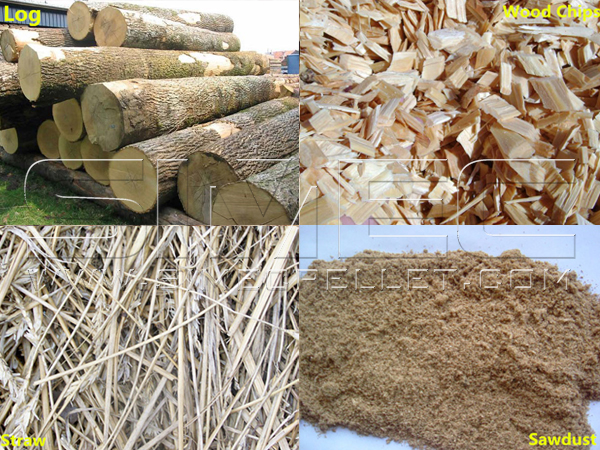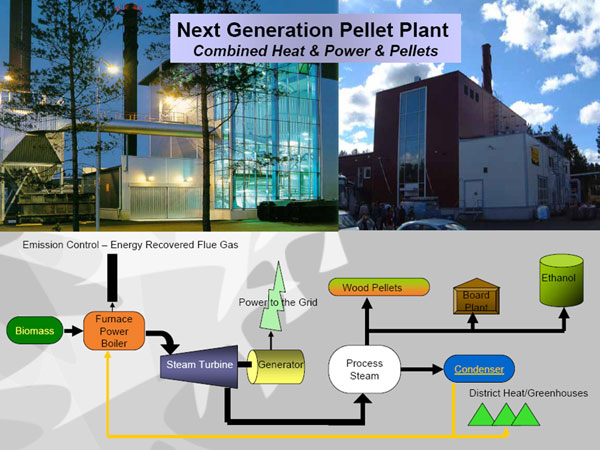Eco-friendly Biofuel Wood Pellet
Wood pellets have increased tremendously in popularity as a heating fuel as well as industry fuel due to their relative ease of use. As a result, the demand for fuel pellets has also grown quickly. Wood is not the only suitable feedstock for manufacturing pellet fuel. Most of the biomass materials can be used to make pellets. Using sawdust, wood shavings and little scraps during the processing of wood products to make pellets is becoming a new way for wood workers to acquire wealth.
What is Biomass Fuel?
- Cordwood, wood pellets, wood chips, waste paper, cornstalks, straw, even animal waste along with a dozen other agricultural byproducts capable of being burned for heat.
- It is renewable, limitless, and has historically proven to be price stable in the bargain.
- Sustainable Forest Initiatives, wood manufacturing by products and other forms of forest management provide pellet fuel manufacturers with low cost materials.
- In many areas of the Midwest, the Forest Service will provide this waste material at little or no cost beyond the expense of hauling it away.
- Pellet fuel is a way to divert millions of tons of waste from landfills and turn it into energy.
People used to burn wood chips as fuel before, but compared with wood chips, wood pellets have more superiorities. The table shows the comparison of wood pellets and wood chips.
| Wood pellets | Wood chips |
| Low moisture content, typically <10% | Moisture content typically ~55% from freshly harvested wood; ~30% from seasoned wood (1 yr.) |
| High volume energy density: 3-3.5 MWh/m3 | Relatively low volume energy density (<1 MWh/m3 @30% MC) |
| Much smaller fuel hopper can be used, and/or fewer deliveries. Many different designs of pellet store available off the shelf |
Large volume fuel storage required and regular deliveries. Good design of chip store and fuel feed vital for ease of fuel delivery and reliable operation |
| Expensive to produce. Requires consistent supply of feedstock so usually only suitable for commercial production | Woodfuel quality chippers expensive, but can be shared between users, or contracted as required, so potentially suitable for self production |
| Clean, dry, low dust. Flow easily so suitable for pneumatic delivery (up to 30m) and easy fuel handling | Don't flow so readily. Delivery by tipper or chipping into store; fuel handling by auger feed |
| Usually low ash <1% | Can be low ash, but a high proportion of bark, or soil contamination can increase this significantly |
| Standards important to avoid pellets crumbling to sawdust, excessive ash content, or slagging problems: CEN/TC335 solid biofuels | Standards vital to ensure moisture content suitable for boiler, and chip size and shape will not block fuel feed:CEN/TC 335, ONORM, DIN |
|
Range of very sophisticated pellet boilers and stoves ideal for domestic applications. Larger pellet boilers good for urban applications like city schools with limited storage space |
Chip boilers tend to be more appropriate for slightly larger applications, though small chip boilers are available, suited to agricultural type installations |
| Embodied energy higher than chips, especially if feedstock dried specially. Using clean, dry waste can divert wood from landfill | Relatively low embodied energy |
| Typical costs (bulk): £160 - £200 per tonne | Typical costs (bulk): £60 - £90 per tonne |
| Summary | Summary |
|
Clean, pleasant, convenient fuel; sophisticated boilers, but is more expensive |
Bulky but cheap fuel, potentially suitable for self production |
| Relatively compact storage requirements | Boilers tend to be better suited to larger or agricultural type applications |
- Wood pellet manufacturers take ground wood, waste wood, paper, bark and other combustibles and turn them into bullet‐sized pellets that are uniform in size, shape, moisture, density and energy content.
- Moisture content of pellets is substantially lower (4% to 8% water, compared to 20% to 60% for cordwood or chips), increasing burn efficiency and allowing for more fuel to be transported in a given truck space, and more energy stored at your site.
- The density of pellet fuel is substantially higher than cordwood (40 lbs. per cubic foot vs. 23 lbs. For cordwood).
- Uniform shape and size allows for a smaller and simpler conveying system that reduces costs and pellets pose none of the risk of explosion that fossil fuels do.
- Pellet burners feature the lowest particulate matter emissions of all solid fuels burners, and since pellets burn so efficiently (system efficiency averages at 80 percent), emissions from pellet burners meet even the most stringent EPA requirements.
- Once the ash is emptied periodically, it can actually double as a fertilizer, and pellet storage poses no soil or water contamination risks.
For Detail Information Please Download PDF.

